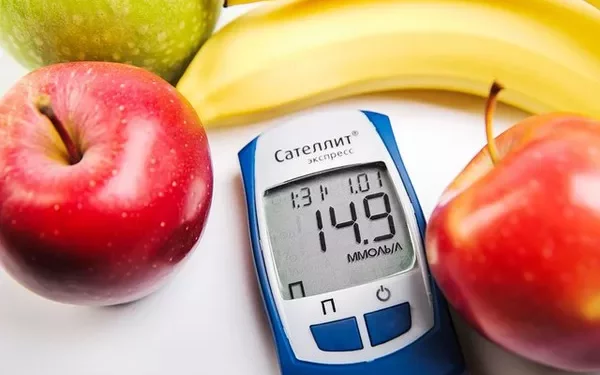Monitoring blood sugar levels is a crucial aspect of managing diabetes. Among the various blood sugar measurements, fasting blood sugar is one of the most important. This article delves into the concept of fasting blood sugar, its significance, the maximum fasting blood sugar level, and how to manage and maintain optimal levels.
What is Fasting Blood Sugar?
Fasting blood sugar refers to the level of glucose in the blood after an individual has not eaten for at least eight hours. This measurement is typically taken in the morning before breakfast. Fasting blood sugar levels provide vital information about how well the body manages blood sugar during periods of fasting and are a critical indicator of metabolic health.
The Importance of Fasting Blood Sugar Levels
Fasting blood sugar levels are essential for several reasons:
Diagnosis of Diabetes and Prediabetes: Elevated fasting blood sugar levels can indicate diabetes or prediabetes.
Management of Diabetes: For individuals with diabetes, monitoring fasting blood sugar levels helps in adjusting medications, diet, and lifestyle to maintain blood sugar within target ranges.
Assessing Insulin Resistance: Fasting blood sugar levels can help assess insulin resistance, which is a precursor to type 2 diabetes.
Normal and Abnormal Fasting Blood Sugar Levels
Normal Fasting Blood Sugar Levels
For most healthy individuals, the normal fasting blood sugar levels range between 70 to 100 milligrams per deciliter (mg/dL). This range signifies that the body is effectively managing blood sugar levels through the appropriate production and utilization of insulin.
Prediabetes Fasting Blood Sugar Levels
Prediabetes is a condition where blood sugar levels are higher than normal but not high enough to be classified as diabetes. The fasting blood sugar levels for prediabetes range from 100 to 125 mg/dL. Individuals with prediabetes are at an increased risk of developing type 2 diabetes and cardiovascular diseases.
Diabetes Fasting Blood Sugar Levels
A fasting blood sugar level of 126 mg/dL or higher on two separate occasions is indicative of diabetes. This elevated level suggests that the body is not producing enough insulin or is not using insulin effectively, leading to high blood sugar levels.
Maximum Fasting Blood Sugar Levels
Defining the Maximum Level
The term “maximum fasting blood sugar level” can be interpreted in various contexts. In a clinical sense, it refers to the threshold above which blood sugar levels are considered dangerous and indicative of uncontrolled diabetes. Generally, a fasting blood sugar level above 126 mg/dL is concerning and requires medical intervention.
Health Implications of High Fasting Blood Sugar Levels
High fasting blood sugar levels can have several adverse health effects, including:
Increased Risk of Diabetes Complications: Consistently high fasting blood sugar levels can lead to complications such as neuropathy, nephropathy, retinopathy, and cardiovascular diseases.
Damage to Blood Vessels: Elevated blood sugar levels can damage blood vessels, leading to poor circulation and increasing the risk of heart disease and stroke.
Ketoacidosis: Extremely high blood sugar levels can result in diabetic ketoacidosis (DKA), a potentially life-threatening condition where the body starts breaking down fats at an alarming rate, leading to the accumulation of ketones in the blood.
Factors Affecting Fasting Blood Sugar Levels
Several factors can influence fasting blood sugar levels, including:
Diet: Consuming high-carbohydrate meals or sugary snacks before bedtime can lead to elevated fasting blood sugar levels.
Physical Activity: Regular physical activity helps in maintaining normal blood sugar levels. Lack of exercise can contribute to higher fasting blood sugar levels.
Medications: Certain medications, including steroids and some blood pressure drugs, can raise blood sugar levels.
Stress: Physical or emotional stress can cause the release of hormones that raise blood sugar levels.
Illness: Infections or illnesses can cause temporary spikes in blood sugar levels.
Hormonal Changes: Hormonal changes, especially in women, can affect blood sugar levels.
Monitoring Fasting Blood Sugar Levels
Home Monitoring
For individuals with diabetes, regular monitoring of fasting blood sugar levels at home is essential. Using a blood glucose meter, individuals can measure their blood sugar levels and track trends over time.
Continuous Glucose Monitoring (CGM)
Continuous glucose monitoring systems provide real-time data on blood sugar levels throughout the day and night. These devices can be particularly useful for individuals with type 1 diabetes or those who have difficulty maintaining stable blood sugar levels.
Professional Monitoring
Regular check-ups with a healthcare provider are crucial for monitoring fasting blood sugar levels and overall diabetes management. Blood tests such as the A1C test, which provides an average blood sugar level over the past three months, can give a comprehensive picture of blood sugar control.
Managing High Fasting Blood Sugar Levels
Dietary Modifications
Balanced Diet: Consuming a balanced diet rich in whole grains, lean proteins, healthy fats, and vegetables can help maintain normal blood sugar levels.
Low Glycemic Index Foods: Foods with a low glycemic index (GI) cause a slower rise in blood sugar levels compared to high GI foods. Incorporating low GI foods into the diet can help manage blood sugar levels.
Portion Control: Managing portion sizes and avoiding overeating can prevent spikes in blood sugar levels.
Physical Activity
Regular physical activity helps the body use insulin more effectively and lowers blood sugar levels. Aim for at least 150 minutes of moderate-intensity exercise per week.
Medications
For individuals with diabetes, medications may be necessary to manage fasting blood sugar levels. These may include:
Insulin Therapy: For individuals with type 1 diabetes and some with type 2 diabetes, insulin therapy is essential for maintaining normal blood sugar levels.
Oral Medications: Several oral medications can help lower blood sugar levels by increasing insulin production, decreasing glucose production in the liver, or improving insulin sensitivity.
Stress Management
Managing stress through techniques such as meditation, yoga, deep breathing exercises, and adequate sleep can help maintain stable blood sugar levels.
Regular Monitoring
Consistent monitoring of blood sugar levels allows for timely adjustments to diet, physical activity, and medications, helping to maintain optimal blood sugar control.
The Role of Healthcare Providers
Healthcare providers play a crucial role in managing fasting blood sugar levels. Regular consultations with a healthcare provider can help in:
Personalized Treatment Plans: Developing personalized treatment plans based on individual needs and health status.
Education: Providing education on blood sugar management, including dietary advice, physical activity recommendations, and medication management.
Monitoring and Adjustments: Regularly monitoring blood sugar levels and making necessary adjustments to the treatment plan.
See also: Why Blood Glucose Monitoring is Important
Conclusion
Understanding and managing fasting blood sugar levels is vital for individuals with diabetes and those at risk of developing the condition. Maintaining fasting blood sugar levels within the normal range through a combination of diet, physical activity, medication, and regular monitoring can prevent complications and improve overall health. Regular consultations with healthcare providers ensure personalized care and effective management of blood sugar levels. By taking proactive steps, individuals can achieve better blood sugar control and reduce the risk of diabetes-related complications.
Related topics:
Why Does Blood Sugar Go Up When Fasting?



























